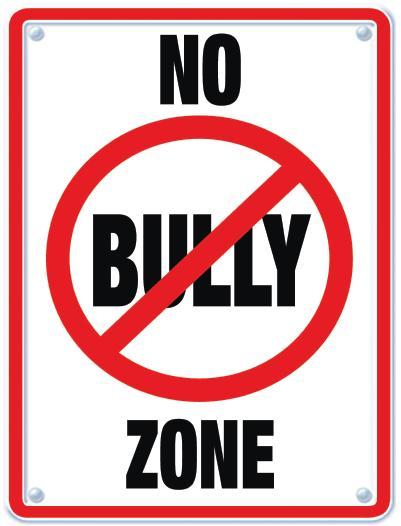by Mrs. Jo-Ann Schaaf
 It seems like bullies are everywhere – elementary, middle and high schools, streets, mall, workplace and even at home. For now, let’s focus on bullying that happens in school. Bullying remains to be one of the key issues that can have serious negative consequences for students while they are in school and most probably, if left unresolved, throughout their lives. Bullies make daily life stressful and miserable for the victims. In most reports (i.e. Kids Health.Org, National Crime Prevention Council, National Library of Medicine), it is stated that nearly half of school children or students said they had been bullied. According to the poll, some of these students said they were both bullies and the bully victims. In one online article, “What Kids say About Bullying,” D’Arcy Lyness, a child psychologist, explained it this way: “Some kids learn to bully because they have been subjected to mean, unfair treatment themselves — by others or by their families. That’s sad, but it’s no excuse. Everyone can choose to act in new and better ways. It’s never too late” (KidsHealth.org).
It seems like bullies are everywhere – elementary, middle and high schools, streets, mall, workplace and even at home. For now, let’s focus on bullying that happens in school. Bullying remains to be one of the key issues that can have serious negative consequences for students while they are in school and most probably, if left unresolved, throughout their lives. Bullies make daily life stressful and miserable for the victims. In most reports (i.e. Kids Health.Org, National Crime Prevention Council, National Library of Medicine), it is stated that nearly half of school children or students said they had been bullied. According to the poll, some of these students said they were both bullies and the bully victims. In one online article, “What Kids say About Bullying,” D’Arcy Lyness, a child psychologist, explained it this way: “Some kids learn to bully because they have been subjected to mean, unfair treatment themselves — by others or by their families. That’s sad, but it’s no excuse. Everyone can choose to act in new and better ways. It’s never too late” (KidsHealth.org).
In order to prevent a student from being bullied, there has to be a clear understanding to what bullying is. The growing international literature on bullying, bully/victim problems, the definition of bullying formulated in Scandinavia is commonly used: A Person is being bullied when he or she is exposed repeatedly and over time to negative actions on the part of one or more other persons (Olweus, 1986, 1993). It is a negative action when a person intentionally inflicts injury or discomfort to another person. Also, in order to use the word bullying, there should be an imbalance of power or strength, meaning, the person who is subjected to the negative actions has difficulty in defending herself/himself and is some what helpless vis-à-vis the person or persons who are harassing her or him. Thus, according to this definition, the bullying phenomenon is characterized by three circumstances: 1) The behavior is aggressive, 2) It is repeated over time, and 3) It occurs in an interpersonal relationship that is characterized by a certain imbalance in power or strength (Olweus Core Program, 2001, p.11). SBCS adopted this definition of bullying (See SBCS Handbook SY 2010-2011,p. 33).
Bullying behaviors is still on the rise amidst all the media information campaign to raise awareness on bullying prevention. Bullies continue to bully because this is the way they can get a feeling of power and control. It takes courage to speak out against bullies or when you see it happening. Students need to be educated on bullying and its prevention so that they can be a leader in stopping it. It is important to take bullying seriously and not just brush it off as something that students have to fend for themselves . Let us all teach students to treat others with respect and kindness, encourage good behavior, and set a good example. It is everyone’s responsibility to stop bullying.
Read more about bullying at:
- www.pacer.org (NATIONAL CENTER FOR BULLYING PREVENTION)
- www.suite101.com/content/school-bullying
- www.nlm.nih.gov/medlineplus/bullying.html

